Auxerre, the capital of the Yonne department in Burgundy, is the fourth-largest city in the region, with a population of approximately 35,000 people. The urban area, which includes the surrounding regions that are attracted to the city, is home to roughly 113,000 inhabitants.
People from Auxerre are known as Auxerrois. The city is an important commercial and industrial center with a range of industries including food production, woodworking, and batteries. It is also famous for its Burgundy wine production, such as Chablis. Additionally, Auxerre was given the title “Town of Art and History” in 1995.
During the Gallo-Roman period, Auxerre was a prosperous center known as Autissiodorum. It was situated on the Via Agrippa, a major road that crossed the Yonne (known as Icauna in Gallo-Roman times) in the 1st century AD. By the 3rd century, Auxerre had become the seat of a bishop and a provincial capital of the Roman Empire. A cathedral was constructed in the city during the 5th century. In the 11th and 12th centuries, the feudal counts of Auxerre built new walls around the city, which included the existing communities.
Auxerre developed into a thriving commune in the 12th century, with bourgeois activities accompanying traditional land and wine cultivation. The city became part of France under King Louis XI, but it suffered during the Hundred Years’ War and the Wars of Religion. The Huguenots captured Auxerre in 1567, resulting in damage to many Catholic structures. In the 18th century, the medieval ramparts were demolished. In the 19th century, the city experienced significant growth with the construction of new infrastructure such as a railway station, a psychiatric hospital, and courts. New quarters were developed on the right bank of the Yonne.
Until the early 20th century, Auxerre was one of the most prosperous cities in the region. However, the local authorities at the time declined to establish a railway in Auxerre and instead opted for the village of Migennes. This decision marked the beginning of the town’s economic decline….
…. and it shows!
NOTE: My camera malfunctioned at times and the photos are overexposed. I have tried saving as much as I could, but often the colorings are wrong. The photos that I am showing which were overexposed are marked with a “*”.
The Old City Centre
Despite the city being 2000 years old, it has not that much to show for itself. A quick look at the old buildings will show you that a) there are not that many for an old city like Auxerre, and b) they are not in good shape.
 Former hospital, now senior citizen home and a vineyard
Former hospital, now senior citizen home and a vineyard Part of the castle walls, now the municipal archives
Part of the castle walls, now the municipal archives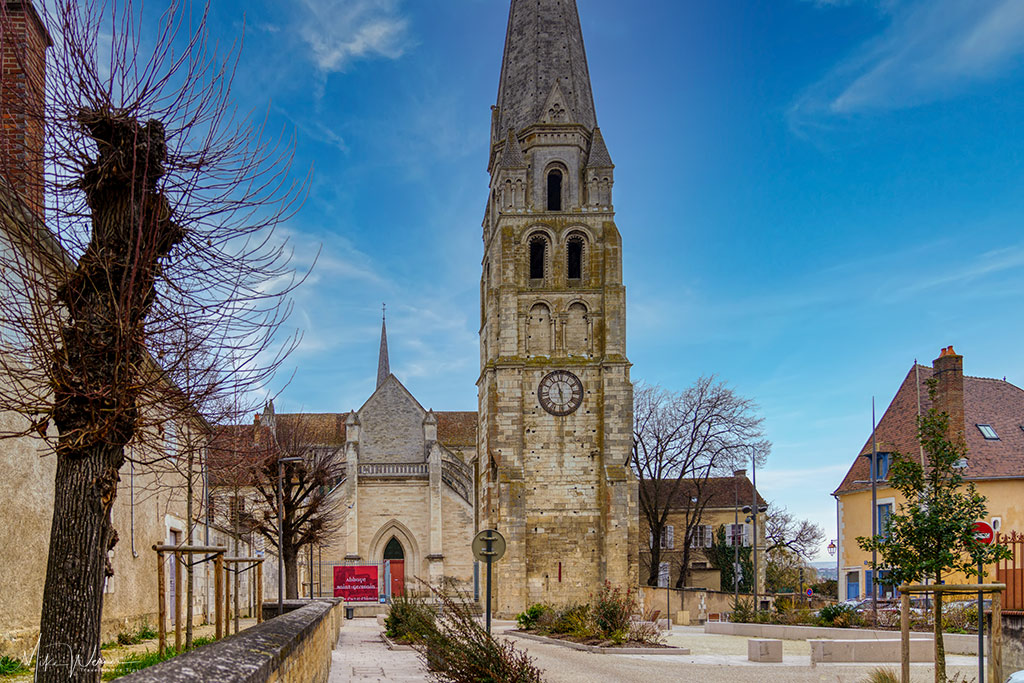 The Saint-Jean bell tower (in front of the Abbey of Saint-Germain d’Auxerre)
The Saint-Jean bell tower (in front of the Abbey of Saint-Germain d’Auxerre)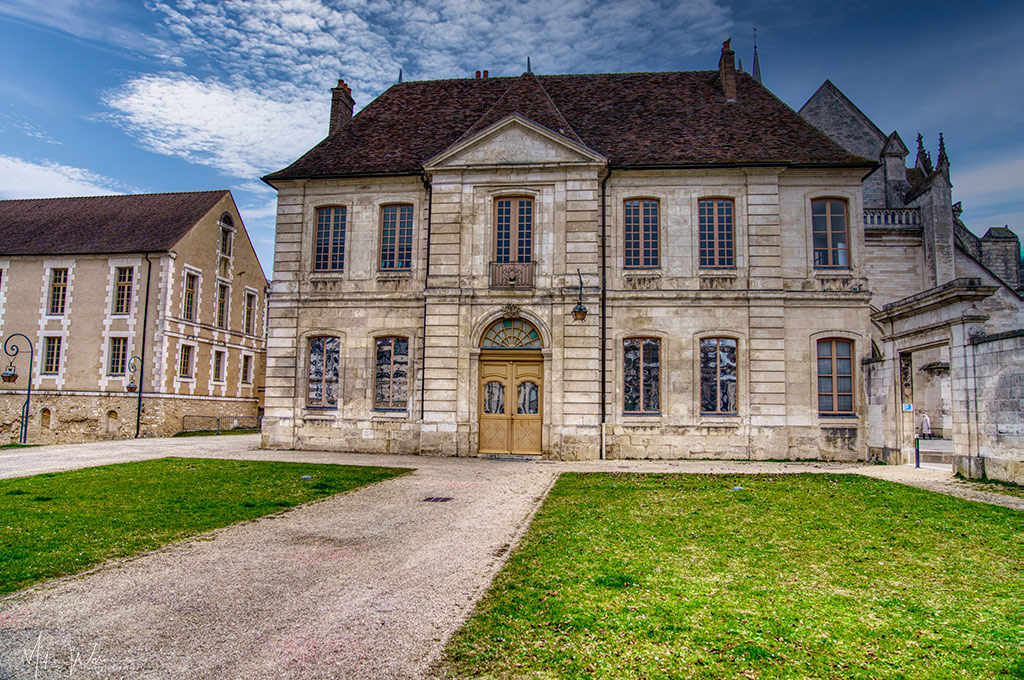 Former Military Hospital
Former Military Hospital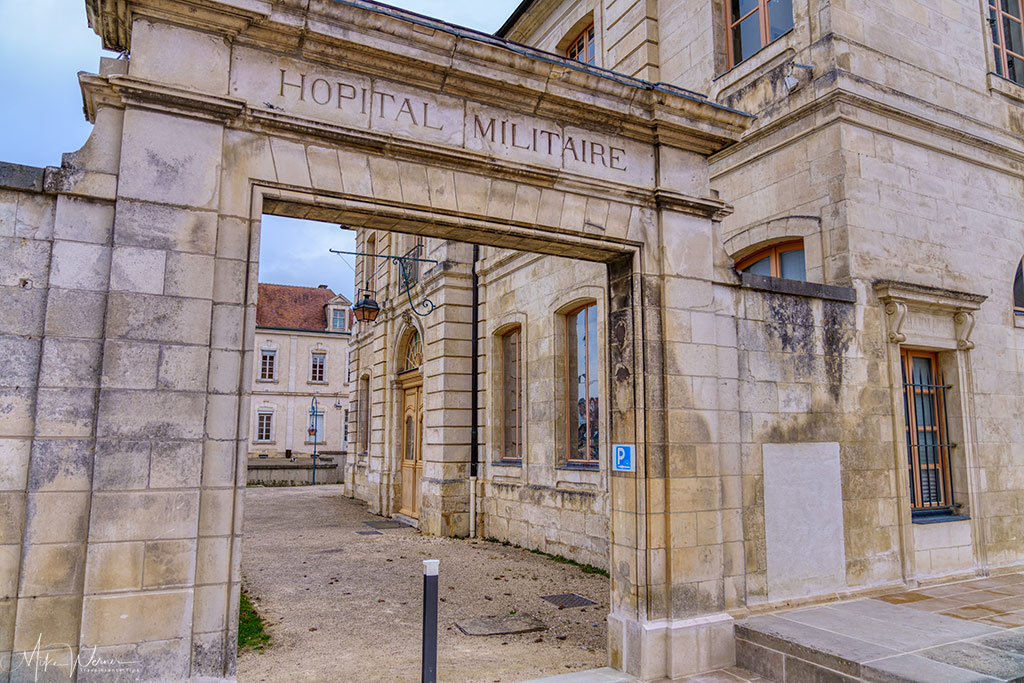 Entrance to Military Hospital
Entrance to Military Hospital Abbey of Saint-Germain d’Auxerre
Abbey of Saint-Germain d’Auxerre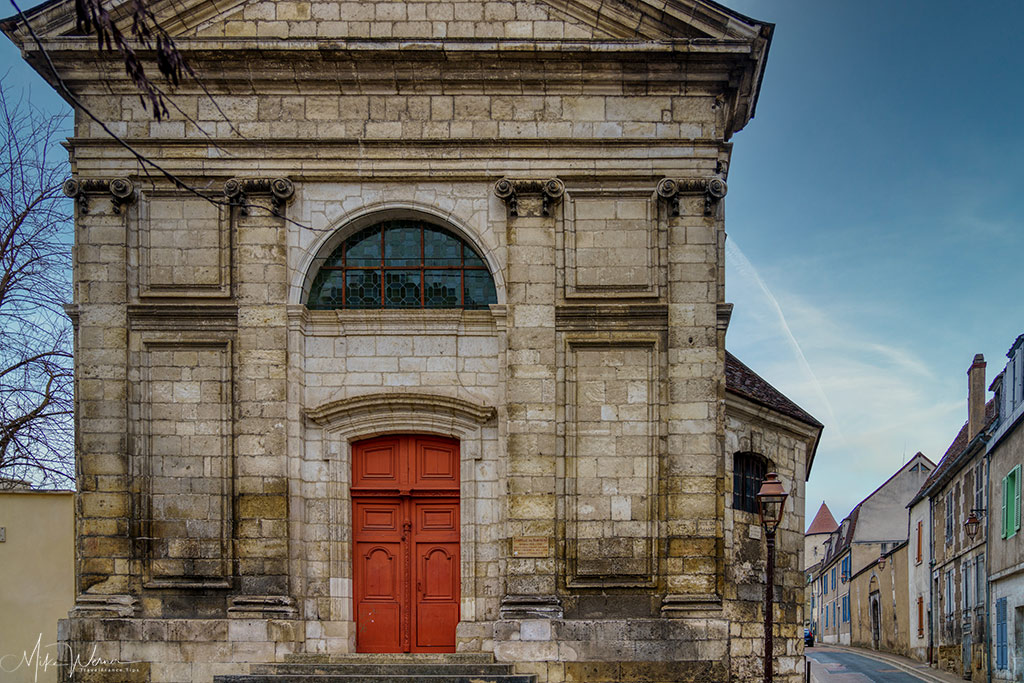 Chapel of the Auxerre seminaire
Chapel of the Auxerre seminaire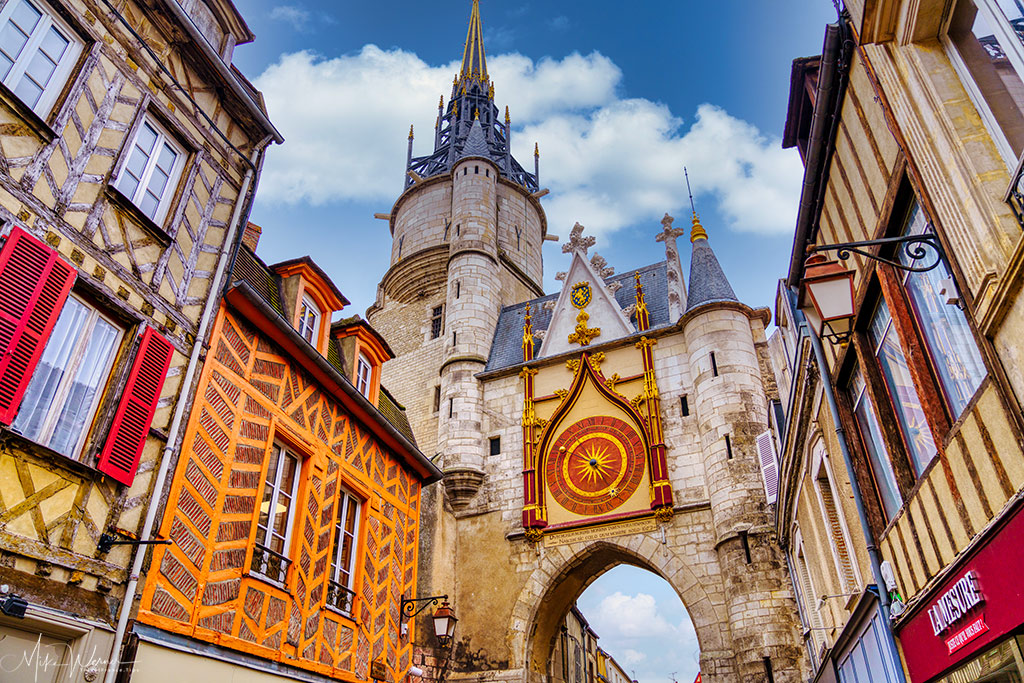 La Tour de l’Horloge (The Clock Tower)
La Tour de l’Horloge (The Clock Tower) Other side of the La Tour de l’Horloge
Other side of the La Tour de l’HorlogeThe first photo shows you an old hospital now used for senior citizens. In front of it you will see grape vines. This belongs to one of the oldest urban wine growers (Le clos de la Chainette) in France.
Of course, the most important and biggest old building is the Saint-Etienne d’Auxerre Cathedral:
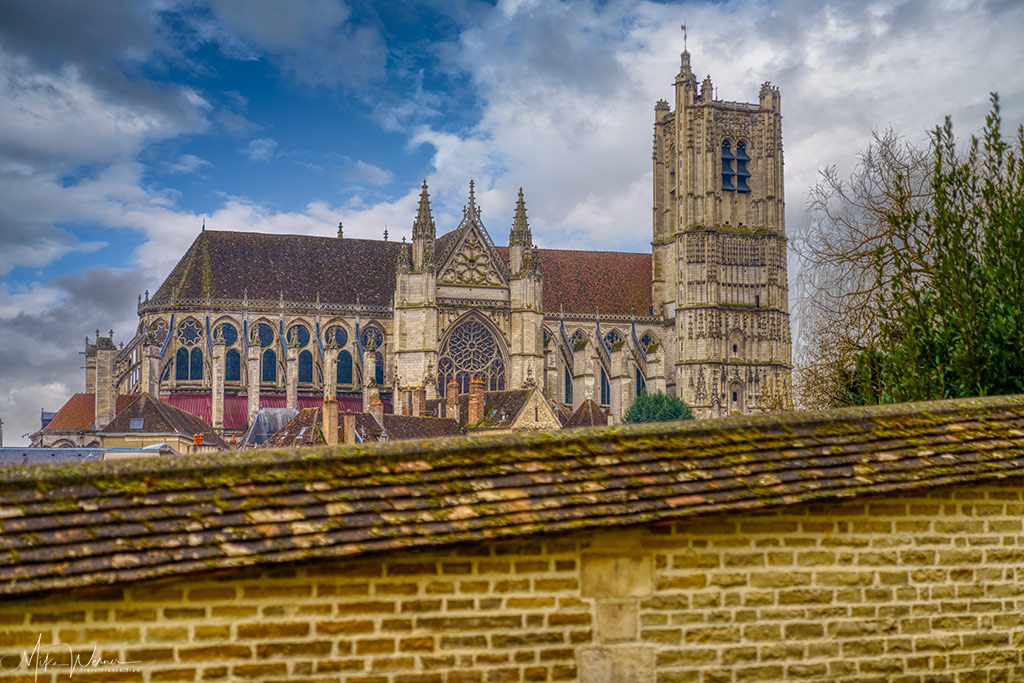
More on this cathedral in a upcoming article. Click here to read our review of the cathedral.
Streets of Auxerre
In the old city centre, streets are narrow and overrun by cars. You will find cars parked everywhere since there are no big public car parks around. Pollution is also rampant.
There are pedestrian only shopping streets, but often there are cars there as well.
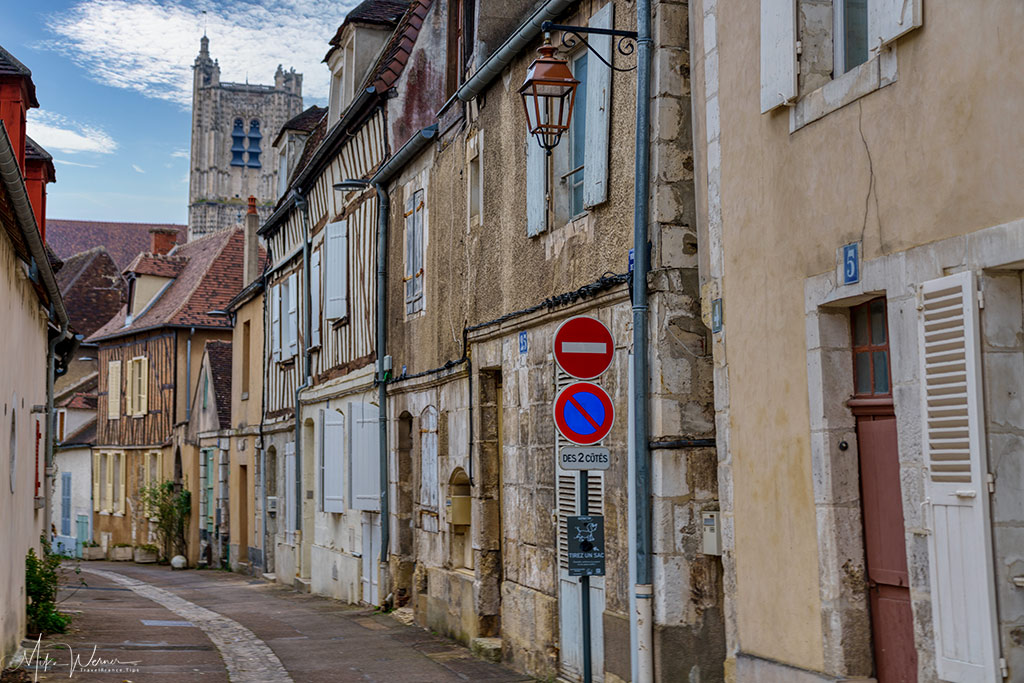 Old Street of Auxerre
Old Street of Auxerre Old Street of Auxerre
Old Street of Auxerre Ruined house
Ruined house Old Street of Auxerre
Old Street of Auxerre Old Street of Auxerre
Old Street of AuxerreMost of the houses you see are still in a reasonable state, apart from being dirty from pollution.
If you are walking the streets of Auxerre, you might come across this statue:
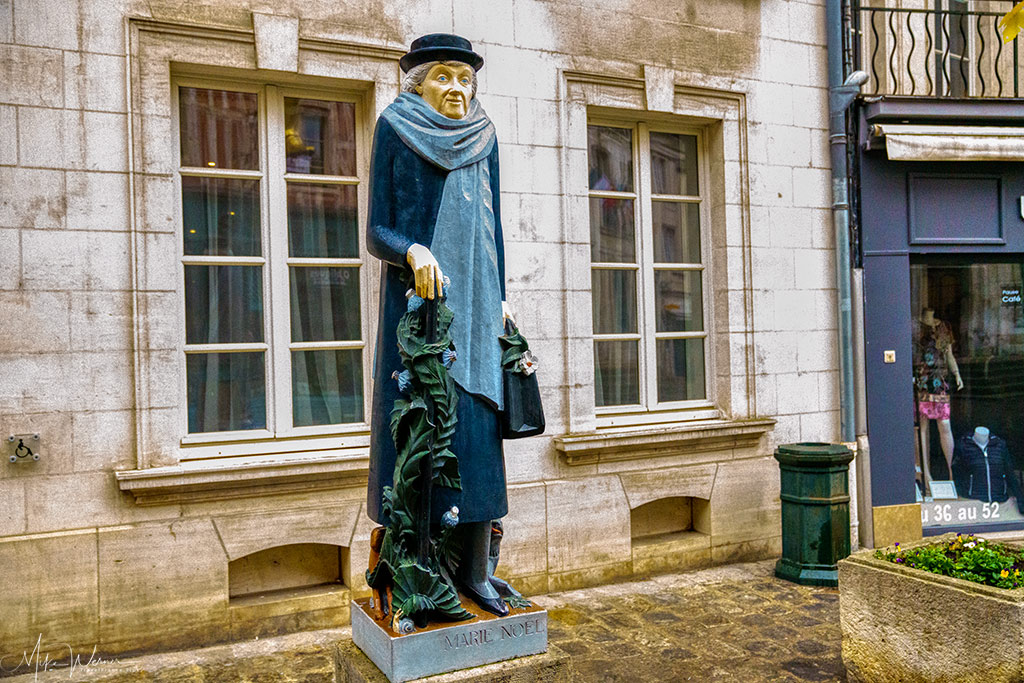
It’s a statue of Marie Rouget (1883 – 1967) known by the pen-name Marie Noël. She was a French poet, a devout Catholic laywoman and officer of the Legion d’honneur. She was nominated for the Nobel Prize in Literature in 1960.
Some of the buildings
Here is an overview of some of the buildings you can see when walking in the old city centre of Auxerre.
 Shop
Shop City Hall *
City Hall *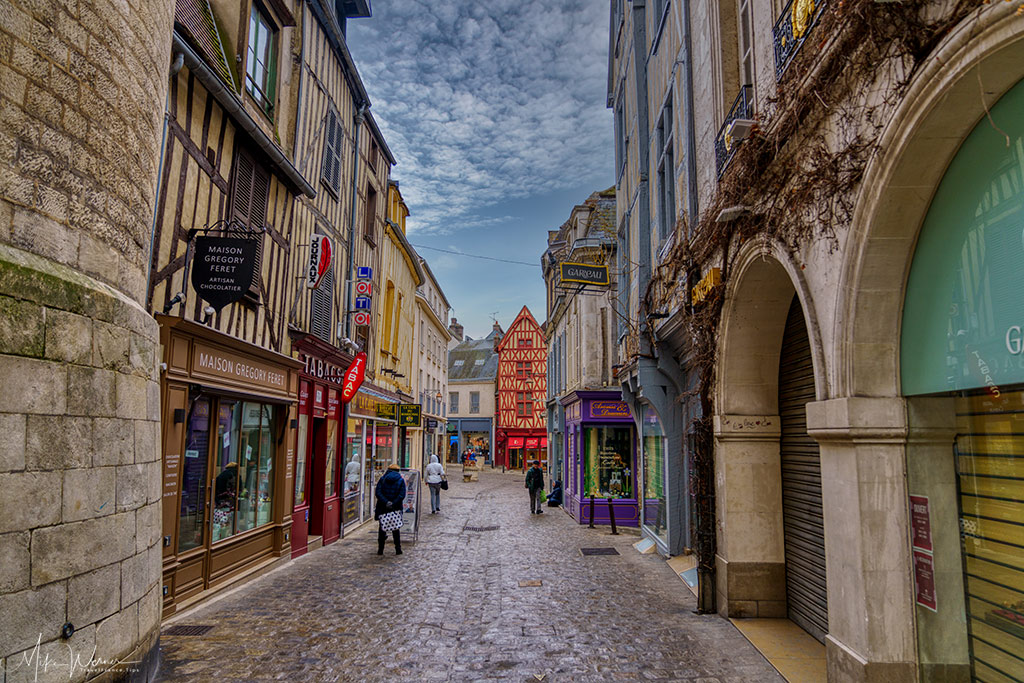 Shopping Street
Shopping Street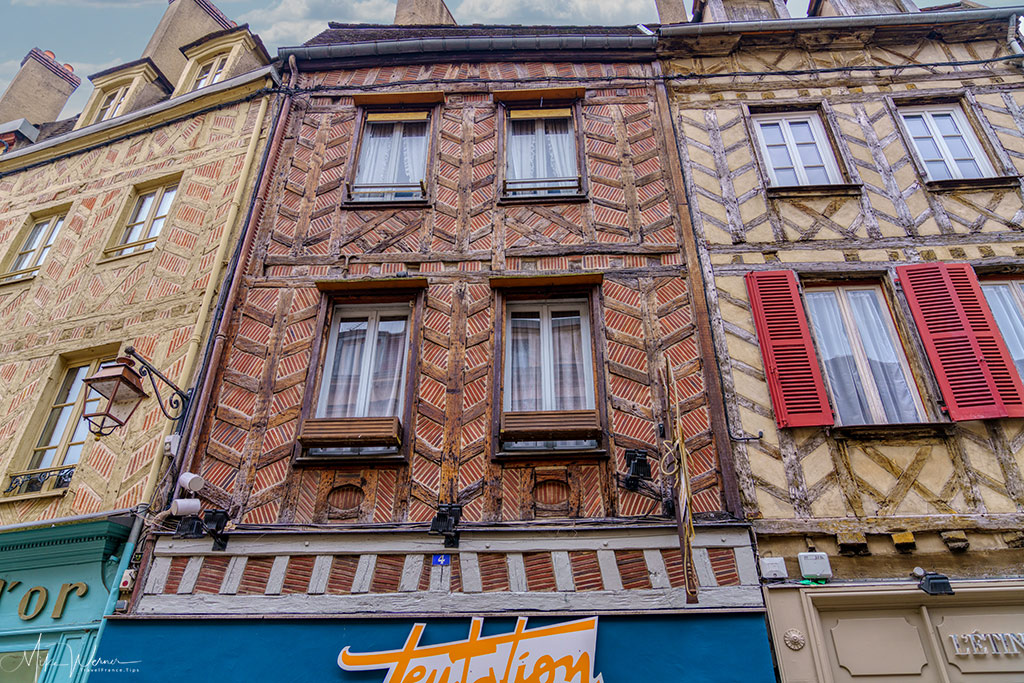 Houses
Houses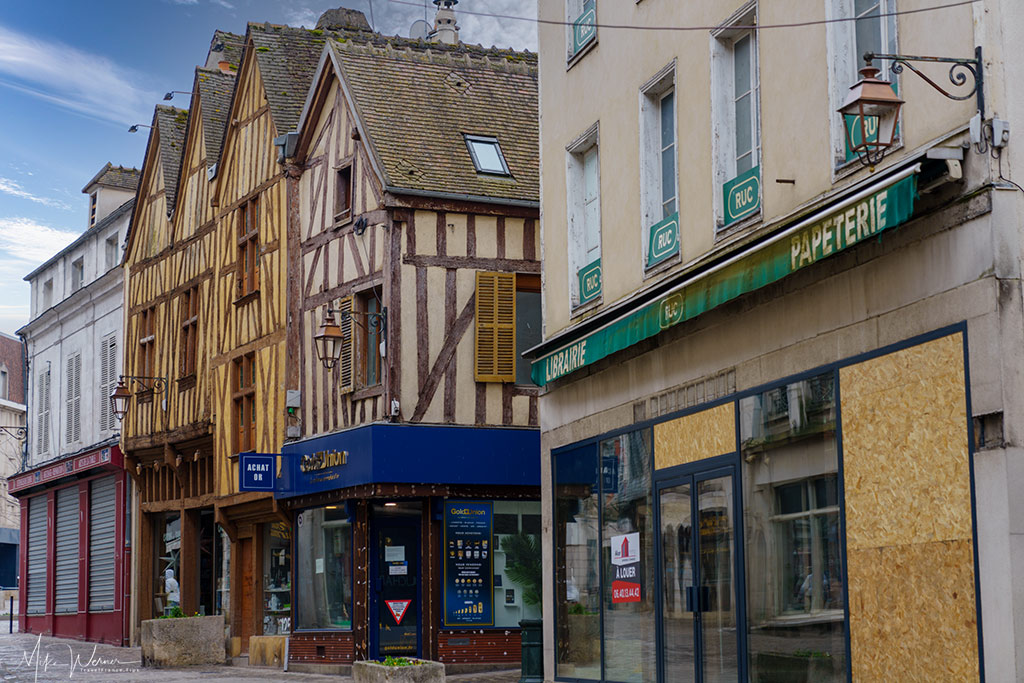 Shops
Shops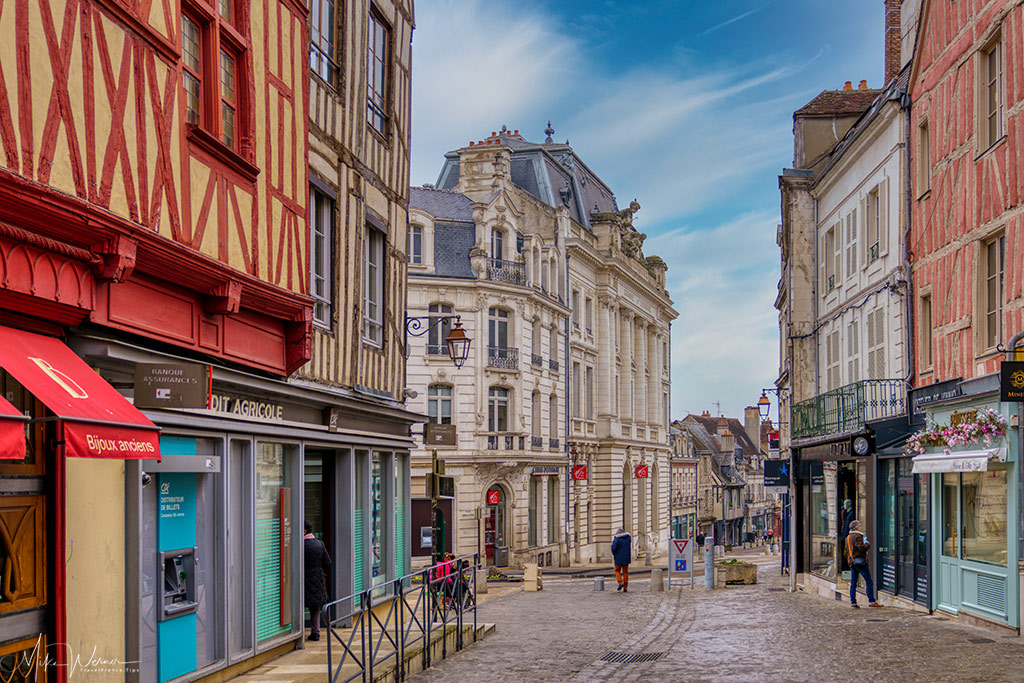 Bank
Bank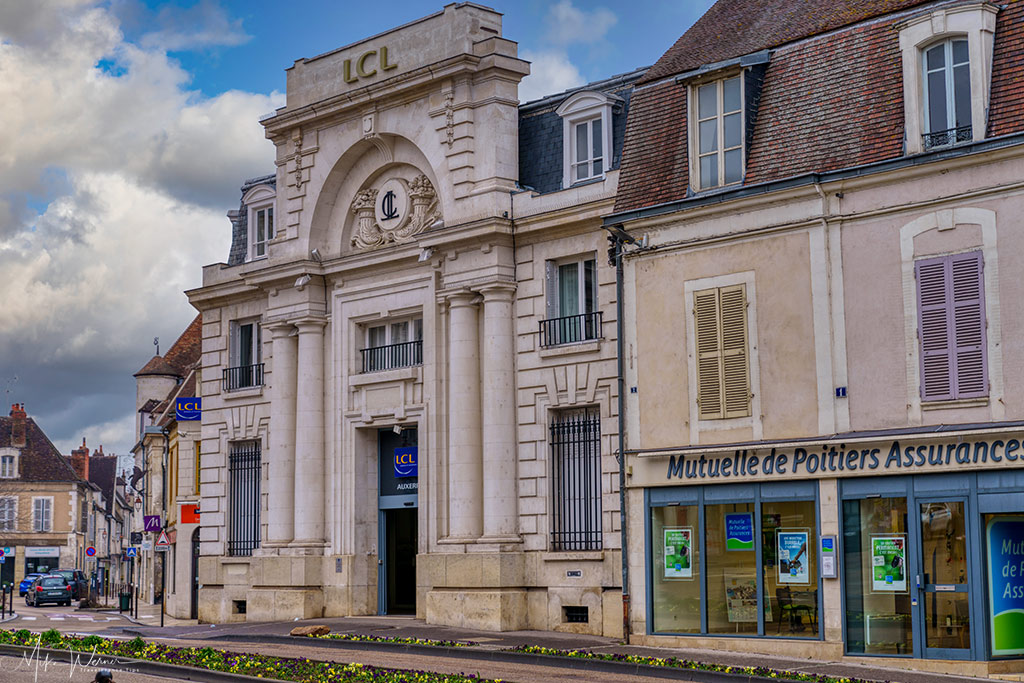 LCL Bank
LCL Bank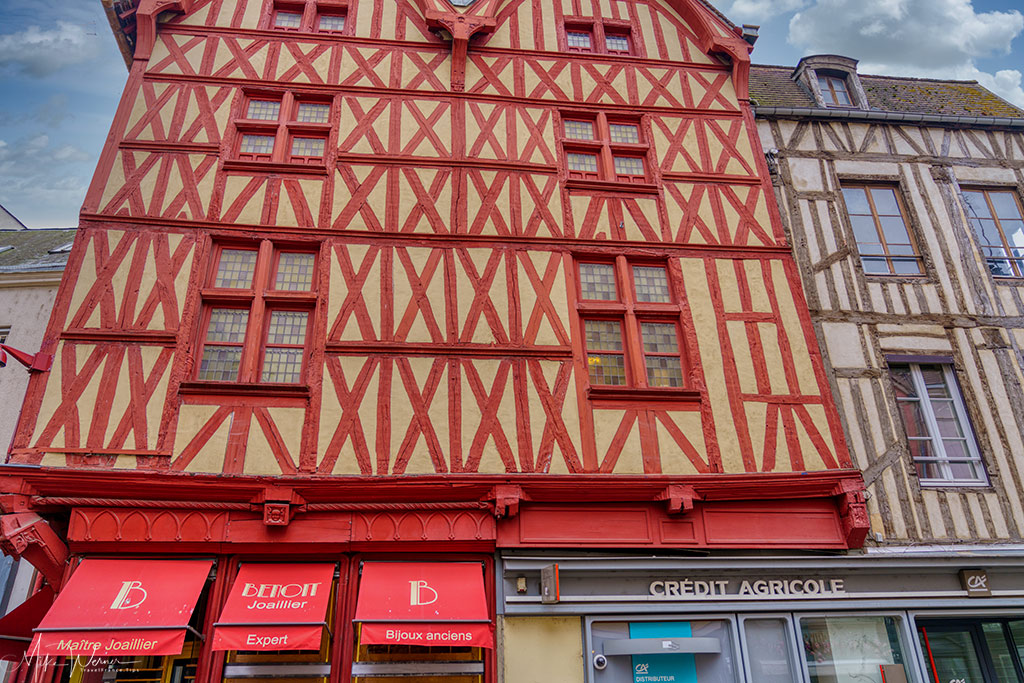 Wood
Wood House & Shop
House & Shop Houses
Houses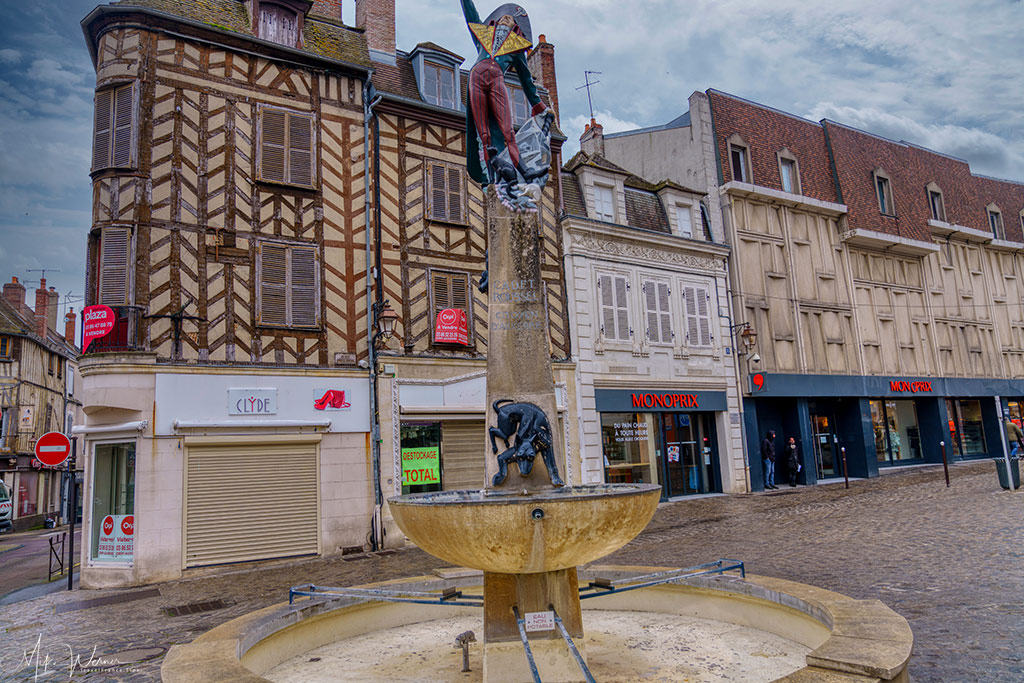 Fountain
Fountain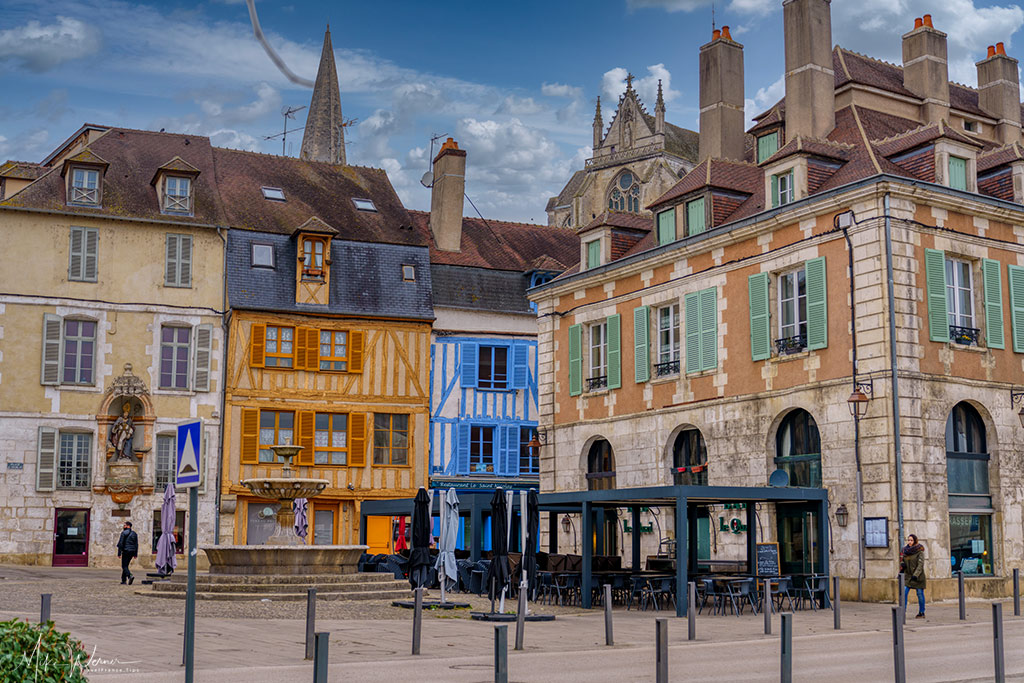 Square
Square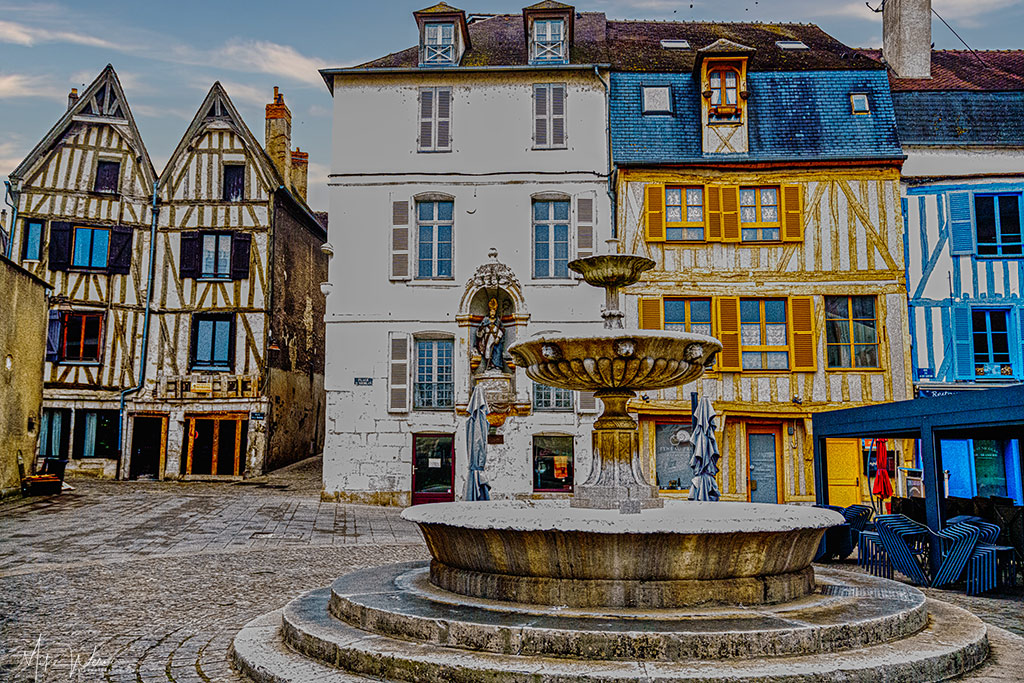 Fountain *
Fountain *Yonne River
The Yonne river is omnipresent in Auxerre. Alongside the river is a nice promenade for pedestrians and bicycles. The view from this walk is impressive, and in my opinion, the best one of the city.
 View of Auxerre at the Yonne river
View of Auxerre at the Yonne river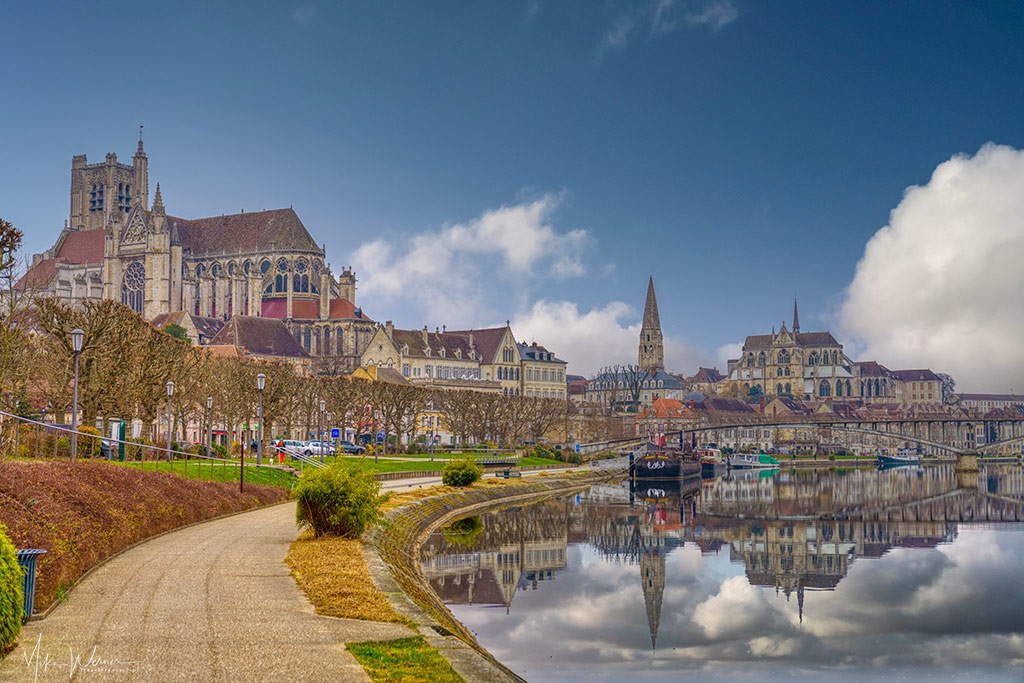 View of Auxerre at the Yonne river
View of Auxerre at the Yonne river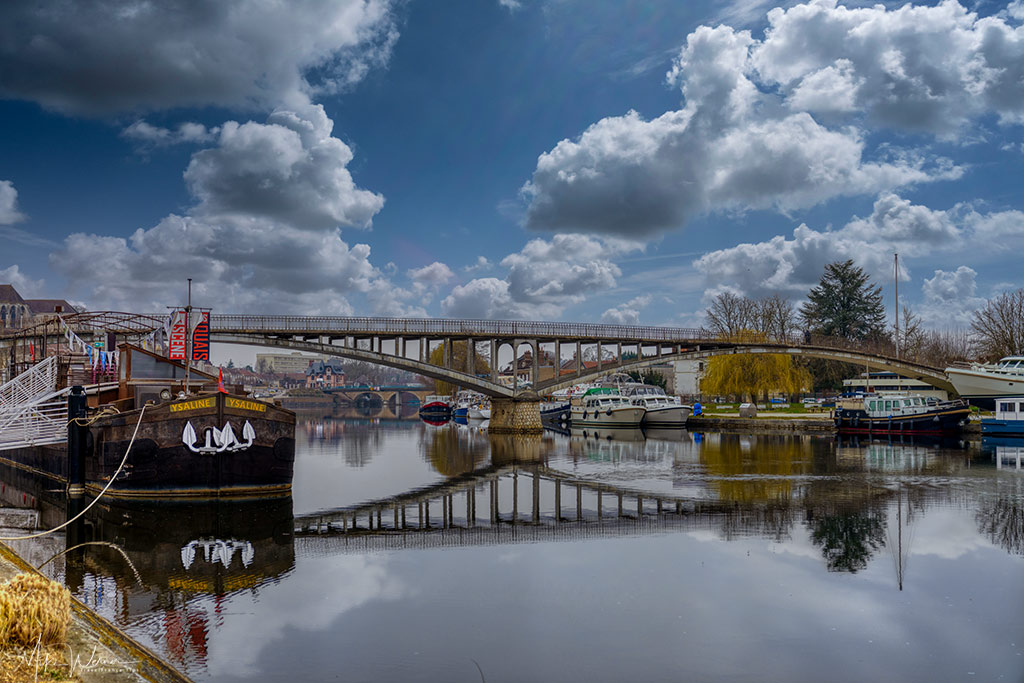 Passerelle de la Liberte (pedestrian bridge)
Passerelle de la Liberte (pedestrian bridge)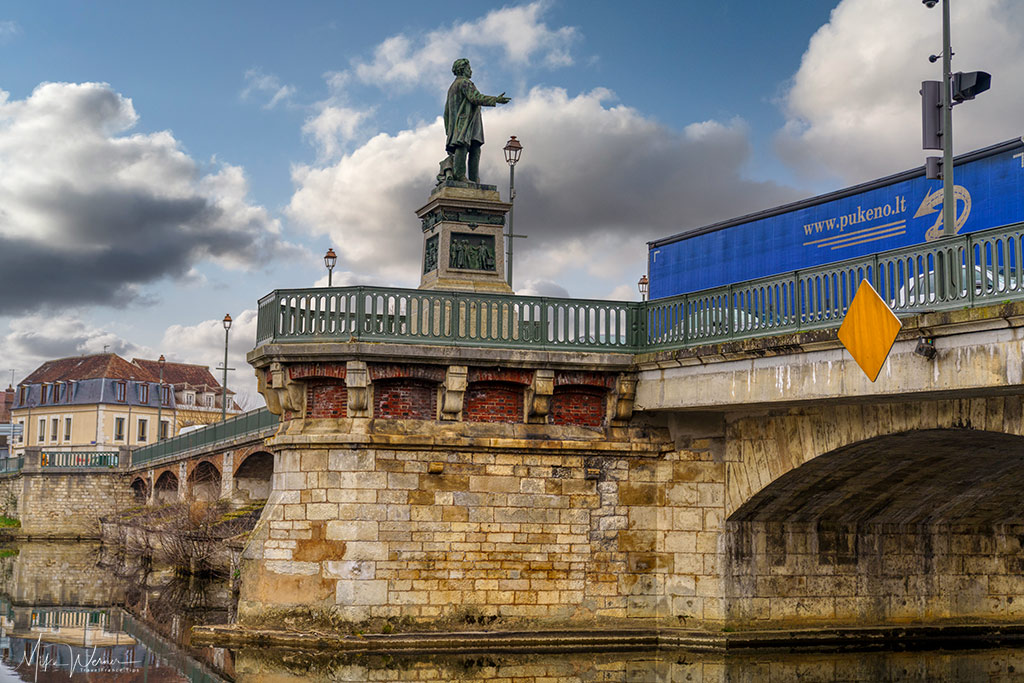 Paul Bert Bridge & statue
Paul Bert Bridge & statueThe last photo above has a statue on a bridge. Both the bridge and the statue are named after Paul Bert (1833 – 1886) a French zoologist, physiologist and politician. He is sometimes given the sobriquet “Father of Aviation Medicine”. He was born in Auxerre.
El Camino – Saint-Jacques Compostela
Auxerre is one of the main cross-points/meeting points for the Camino (the Saint-Jacques Compostela pilgrimage).
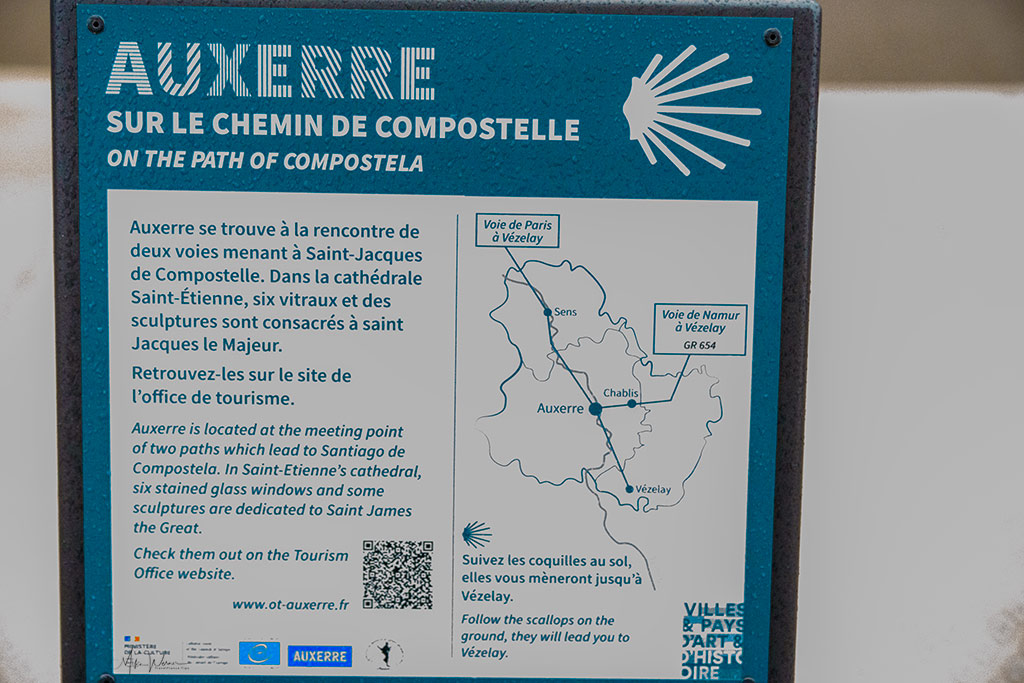
Conclusion
Auxerre may not be a destination that you absolutely must visit, so there’s no need to go out of your way to see it. However, if you happen to be in the area, it could be worth taking a day trip to explore the city. Keep in mind that if you are planning to drive there, finding a parking spot might be a challenge.
Related Posts
- 10000
- 10000
- 10000
- 10000





